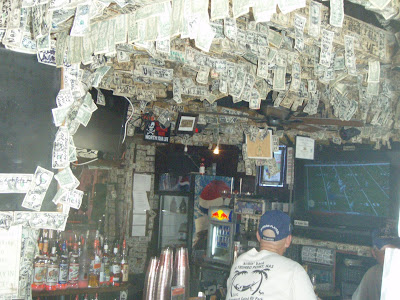Wiily Ts in KeyWest on Duval. This bar was covered in Dollar bills a true fire trap
Dry Tortugas and Fort Jefferson from sea.
Inside the fort. The people we went on tour with
A picture to give some perspective of the size of the fort
Look back to the original steel lighthouse
The arch between the gun embrasures where the powder monkeys would run between the guns
Nice picture of the moat
Bush Key . We walked around the key at surfline. Not allowed to move into vegetation because a bird sanctuary
Le Chat Beaute at anchor
December 12, 2011
Dry Tortugas and Fort Jefferson from sea.
Inside the fort. The people we went on tour with
A picture to give some perspective of the size of the fort
Look back to the original steel lighthouse
The arch between the gun embrasures where the powder monkeys would run between the guns
Nice picture of the moat
Bush Key . We walked around the key at surfline. Not allowed to move into vegetation because a bird sanctuary
Le Chat Beaute at anchor
December 12, 2011
We pulled anchor in Key West for the run out to the Dry Tortugas. Plan was to sail to the Marquesas Keys and spend the night there. About 25 miles west of Key West. As the winds were out of the North if anchorages seemed difficult just dropping the hook on the leeward side of an atoll would be good enough for the night.
.
Just before the Marquesas is Boca Grande Key. It looked easier than the Marquesas so we decide to anchor for the night. The winds had been in the 10-15 range so the sail down from Key West, had been very pleasant and flat.
Up early for the next leg to the Dry Tortugas, about 50 nm with the winds NE. Very pleasant sail and we arrived early afternoon after sailing 6-7 knots the whole way.
The Tortugas are a national park and the approach from sea is impressive. The anchorage is sheltered by the fort and Bush key so is calm even when the winds are roaring. There were lobster fisherman and a couple of sailboats in the anchorage. We stayed on the boat the first night and enjoyed a beautiful sunset and adult beverages to toast the day.
In true cruiser style we waited to tour the fort after the daily ferry pulled in and we tagged along and got the free tour provided by a young woman on the ferry. It is called a ferry but in reality is a fast cat the people pay $168 from Key West and back. This includes breakfast and lunch. The ferry goers are on the island about 4.5 hours and about 4 hours travelling.
Fort Jefferson was started in the 1840s and construction was continued until 1874 when the advent of better projectiles made it obsolete. It was designed for round shot but when exploding ordinance was developed the walls could be reduced to rubble in a day. It took about 16 million bricks to complete and it employed some very advanced techniques involving sewerage and drinking water. Cisterns were built below the fortifications and rain water off the grass roofs drained into these cisterns and provided the drinking water.
A moat around the fort helped stop damage by waves and made it difficult for troops to attack from the ground. The moat also provided the sewer. Tunnels under the moat walkway allowed sewer water to drain out into the gulf with the tides. Unfortunately the tides here are diurnal and small. 1-2 feet so the moat tended to smell a bit when the 1700 soldiers and workmen were there.
A Union garrison was here during the Civil War but never saw any action. No shots ever fired in anger at Fort Jefferson. Truly a engineering feat to construct a fort of this size under adverse conditions. A great stop on the way to Cuba!
We left for Havana at 1600 and after working through the shoals to deep water we set a double reefed main and rolled out half the headsail. We were moving along at 6-7 knots which would make for a daylight entrance to Marina Hemingway, the port of entry for Cuba. Very fine sailing until we hit the axis of the Gulf Stream. The wind started to blow 20-25 and the seas were a consistent 6-8 with an occasional angry one for good measure. After sailing across the Pacific 6-8 ft seas are a good day, but the Gulf Stream stacks these seas and squares them off and reduces the period to about 5-6 seconds. Very uncomfortable and the bridge deck slap on the cat is unnerving. Before sun up the wind died to ten knots and the seas calmed as we approached the coast. We found the sea buoy and contacted the marina and they arranged for Cuba officialdom to be at the arrivals dock.
Cuba like a lot of Latin American countries is paper work heavy! We had seven men come aboard and a sniffer dog. The total process took 3 hours not counting time I had to go to money changer. American dollars are easily exchanged here but the rate is not favorable. Best with Canadian or Euros.
Cuba has been a very pleasant surprise as I did not know what to expect. The people are friendly and eager to talk. The marina staff is very helpful although some facilities are in need of repair.










No comments:
Post a Comment